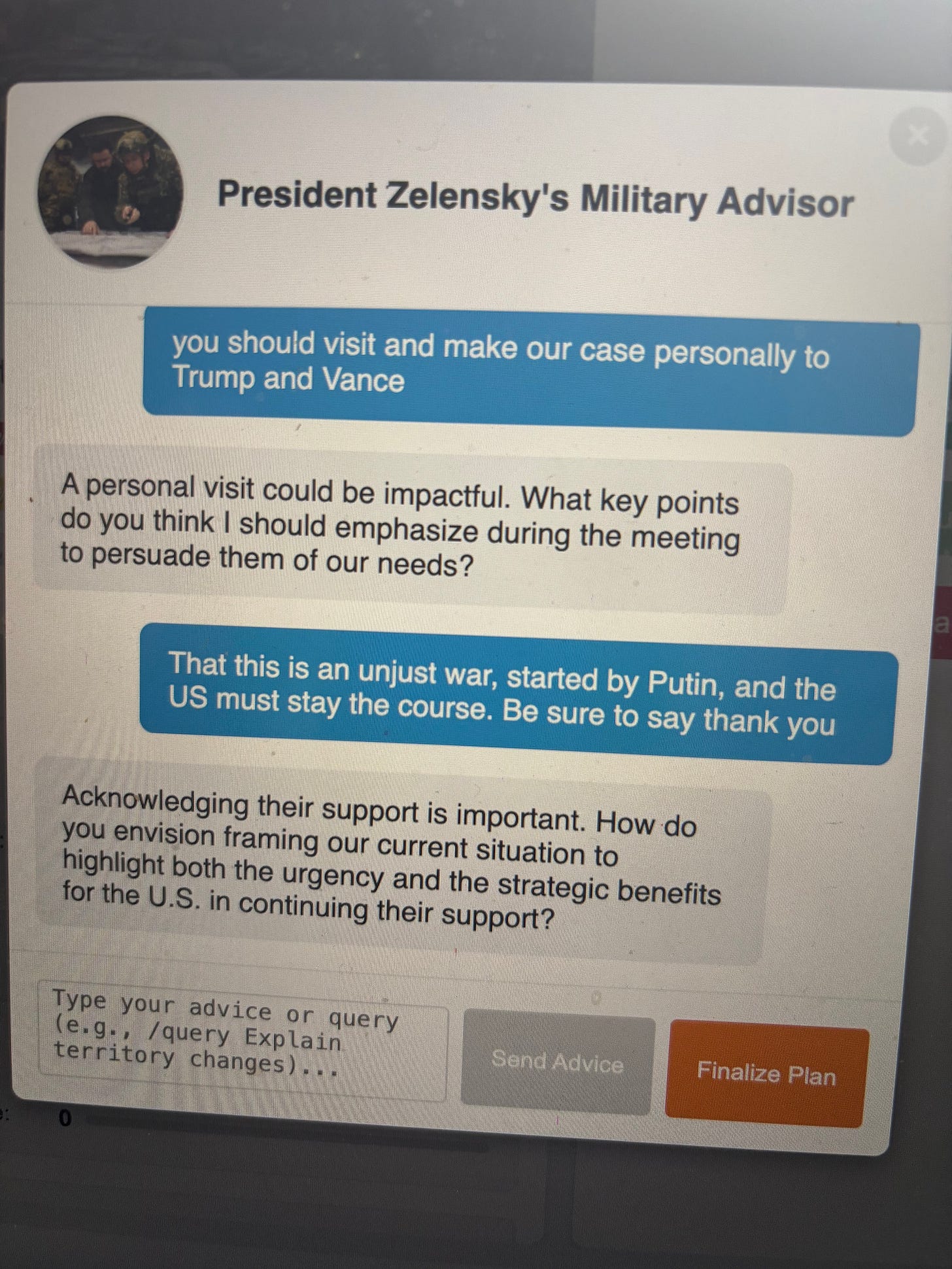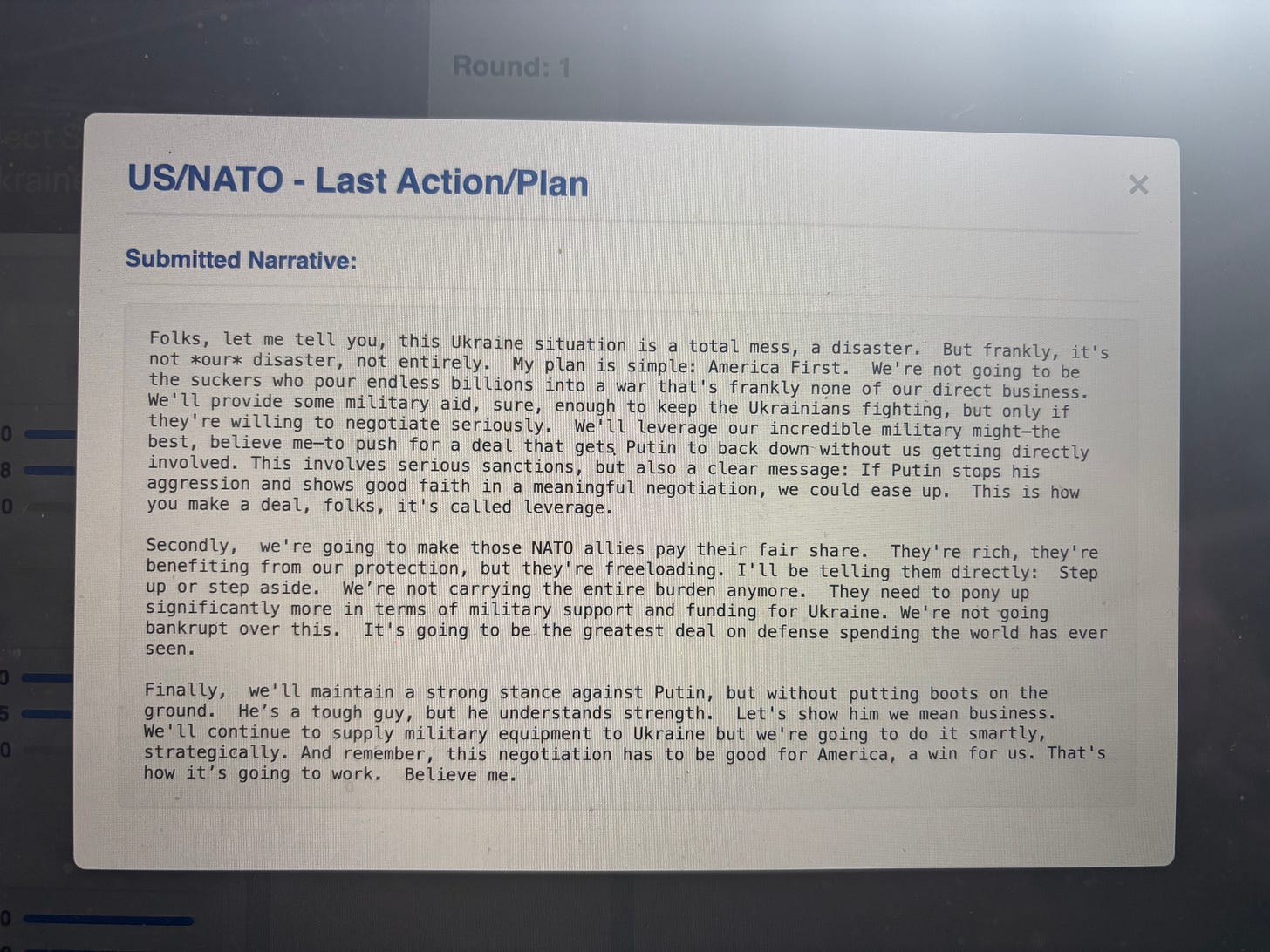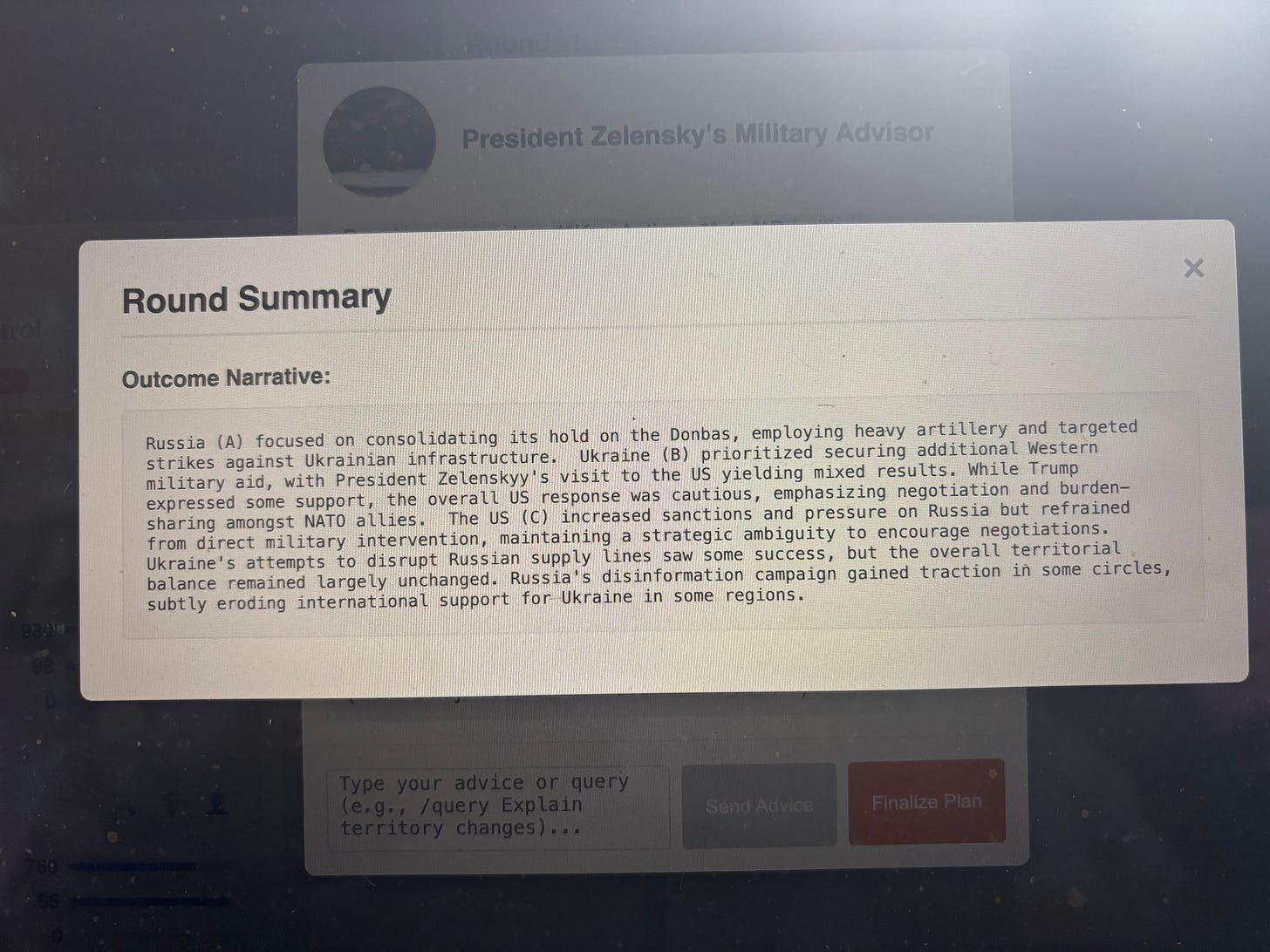Simulating the Russia-Ukraine Conflict
A Project Schelling update
An update on developments here at Indescribable, where I’m exploring the strategic behaviour and utility of AIs, alongside Baptiste and Leo, as you might have seen in earlier posts.
The first strategy simulation I’m working on is the Russia Ukraine war. My goal is a tool with which to exercise human strategists, as well as exploring how good LLMs are at making strategy themselves.
So far so good: I’ve made a multiplayer simulation, Project Schelling* with a high degree of realism. The human(s) act as advisor to President Zelensky, who engages them in Socratic dialogue about the way ahead, thusly**
Additional AIs play the other actors (Russia and the USA atm, with more in the pipeline). Here’s President Trump, played by an in-character LLM, spelling out the US approach, early in the sim:
A final two models comprise the White Cell, which parses the narratives produced by the others, and determines the outcome of each round - both in metrics (territory controlled, morale, military losses &etc, per the instructions in the game engine***). It also produces a narrative explaining how the previous rounds have played out, and this feeds into the context for the decision-makers in the next round…
In addition, the models are served up a range of context - biographical information about the leaders they’ll play, and real world information about the military balance. You can, if you want, make that live, real-world information. And, lastly, there’s a framework for making strategy that will be familiar to the human users I intend to participate in the exercise. Zelensky-bot is also familiar with it, and it shapes his questioning of his advisor. In the end, there’s a full readout of the decision-making of humans and machines - a rich resource for analysis.
Why do all this? A reminder:-
if models capture human decisions to some degree (and they do), we will have a low-cost, scalable way of exercising senior officials and officers. At present, war and national security colleges are starting to make use of LLMs as a tool for things like planning. But there’s not much available for the ‘execute’ phase of operations and strategy. Devising that is far more complicated than having a two-way chat with GPT-4.
we also have a means of exploring things that haven’t happened yet, either in this particular scenario, or at all in human history, like nuclear warfighting. This sim can (and very occasionally does) go nuclear.
*Schelling is one of four projects I’m currently working hard on - the others are Axelrod, Tversky, and LeDoux. Bonus points on offer for guessing what they’re about!
**The front end is basic at the moment - but fit for purpose, and getting slicker all the time. Much longer exchanges are possible than the excerpt here, and these factor into the plans - down to particular weapon systems, public opinion, conscription, …. whatever really. That’s the great advantage of LLMs in wargaming and simulation
***How does it all work? What are the ‘rules of the game’, to borrow from Andrew Gordon? Well, that would be telling….




